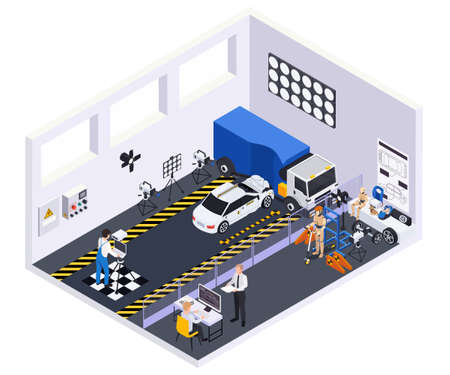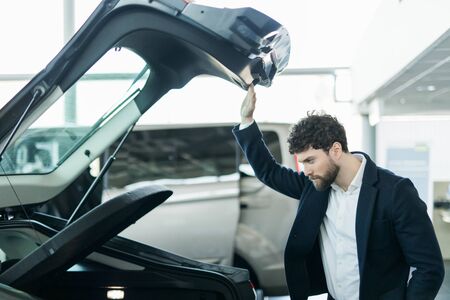1. Ensure Safety First
Getting into a car accident can be stressful, but staying calm and ensuring everyones safety should be your first priority. Follow these steps to manage the situation safely.
Check for Injuries
Before doing anything else, check yourself and your passengers for any injuries. If someone is hurt, call 911 immediately and wait for emergency responders. If everyone appears uninjured, proceed to the next step.
Move to a Safe Location
If possible, move your vehicle to the side of the road or a safe location to avoid blocking traffic. If your car is inoperable or its unsafe to move, stay inside with your seatbelt fastened until help arrives.
Where Should You Move?
| Situation | Action |
|---|---|
| Car is drivable and road is safe | Move to the shoulder or a parking lot |
| Car is undrivable but youre in a dangerous spot | Turn on hazard lights and exit safely if possible |
| Highway accident | Pull over as far as possible or use emergency lanes |
| Nighttime accident | Find a well-lit area to increase visibility |
Turn on Hazard Lights
Switch on your hazard lights to alert other drivers and reduce the risk of further accidents. If you have safety cones or reflective triangles, use them to signal your position, especially at night or in low-visibility conditions.
2. Assess Vehicle Damage
After ensuring everyone is safe, the next step is to check both vehicles for any visible damage. Even if the accident seems minor, it’s important to carefully inspect your car and the other vehicle involved.
Check for Visible Damage
Walk around both cars and look for dents, scratches, broken lights, or leaking fluids. Some damages may not be immediately noticeable, so take your time during the inspection.
Determine if the Vehicles Are Drivable
After inspecting the damage, assess whether the vehicles can still be driven safely. Here’s a simple guide to help you decide:
| Situation | Drivable? |
|---|---|
| Minor scratches or dents | Yes |
| Broken headlights or taillights | Possibly (if not nighttime or low visibility) |
| Leaking fluids | No |
| Heavy front or rear-end damage | No |
| Steering or braking issues | No |
Take Photos for Documentation
Before moving the vehicles, take clear pictures of all visible damage from multiple angles. This will be helpful for insurance claims and future reference.
If your vehicle is unsafe to drive, turn on the hazard lights and call for roadside assistance or a tow truck.

3. Exchange Information
After making sure everyone is safe and reporting the accident if necessary, the next crucial step is exchanging information with the other driver. Properly documenting details now can save you a lot of trouble later when filing insurance claims.
What Information Should You Collect?
It’s important to swap key contact and insurance details with the other driver. Make sure to collect the following information:
| Details | What to Collect |
|---|---|
| Driver’s Name | Get the full legal name of the other driver. |
| Phone Number | Exchange reliable phone numbers for easy future contact. |
| License Plate Number | Write down or take a photo of the other vehicle’s license plate. |
| Insurance Company & Policy Number | Ask for the insurance provider’s name and policy number. |
| Vehicle Make, Model & Color | Record the details of the other driver’s car. |
How to Exchange Information Smoothly
Keep the conversation calm and professional. Avoid admitting fault or blaming the other driver—just focus on gathering the necessary information. Here are some tips for a smooth exchange:
- Use your phone to take pictures of their documents instead of writing them down.
- Double-check for any mistakes or missing details before leaving.
- If the other driver refuses to share information, wait for law enforcement to arrive and handle the situation.
Should You Share Your Driver’s License?
In some states, sharing driver’s licenses isn’t required, but you may choose to show yours to verify identity. If you do, avoid letting the other driver take a photo for privacy reasons.
Next Step After Exchanging Information
Once you’ve gathered all the necessary details, you’ll be ready for the next step in handling the accident. Make sure the information is safely stored so you can easily refer to it later.
4. Document the Scene
After ensuring everyones safety and exchanging information with the other driver, its crucial to document the scene properly. Having accurate records can help with insurance claims and any potential legal matters.
Take Photos of the Accident Scene
Use your phone or a camera to take clear pictures of the accident site. Capture multiple angles to provide a comprehensive view of what happened. Focus on:
- The overall accident scene, including all vehicles involved
- Any visible damage to the cars
- Nearby traffic signs and signals
- Skid marks, broken glass, or debris on the road
- Weather and road conditions at the time of the accident
Photograph Vehicle Damage
Ensure you take close-up shots of any dents, scratches, or broken parts on your car and the other vehicle. This will serve as proof if there are any disputes later.
Collect Witness Statements
If there are any bystanders who saw the accident, ask them if they are willing to provide a statement. Get their name and contact information in case they need to verify details later. A witness account can help clarify who was at fault.
Key Information to Record
| Item | Details to Include |
|---|---|
| Photos | Accident scene, vehicle damage, traffic signs, road conditions |
| Witness Statements | Names, contact information, details they observed |
| Traffic Signs | Stop signs, traffic lights, speed limit signs nearby |
Why Documentation Matters
Having clear and detailed evidence can make the insurance claim process smoother. It also helps in case there are any disputes about what happened. Taking the time to document everything now can save you headaches later.
5. Notify the Authorities and Insurance Company
After ensuring everyones safety and documenting the accident, the next step is to inform the proper authorities and your insurance provider. This helps protect you legally and ensures a smoother insurance claims process.
Call the Police if Necessary
Depending on the severity of the accident and local laws, you may need to call the police. In some states, reporting a minor accident is required by law. Even if its not mandatory, having an official report can be helpful when dealing with insurance claims.
When Should You Call the Police?
| Situation | Should You Call the Police? |
|---|---|
| Injuries are involved | Yes |
| Significant property damage | Yes |
| The other driver is uncooperative | Yes |
| Minor damage with both parties agreeing | Not always required |
Report the Incident to Your Insurer
After dealing with the authorities, contact your insurance company to report the accident. Most insurers have a 24/7 claim hotline or mobile apps to make the process easier. Be ready to provide details such as:
- Time and location of the accident
- Names and contact info of all parties involved
- Police report number (if applicable)
- Descriptive account of what happened
Follow Insurance Instructions on Filing a Claim
Once youve reported the accident, your insurance company will guide you through the claims process. Follow their instructions carefully, whether its providing additional documentation, getting vehicle repairs, or dealing with a claims adjuster. Staying proactive and responsive will help resolve the situation faster.


